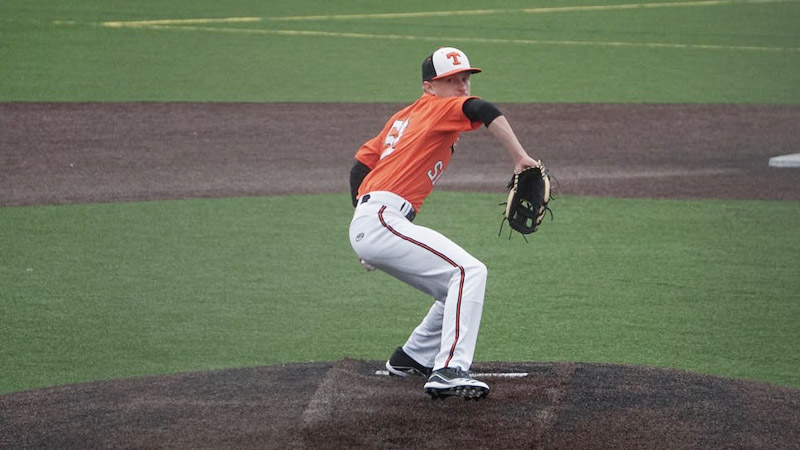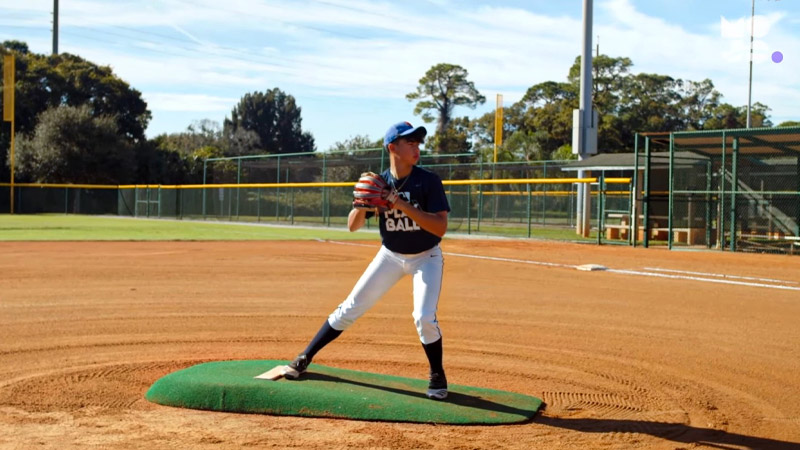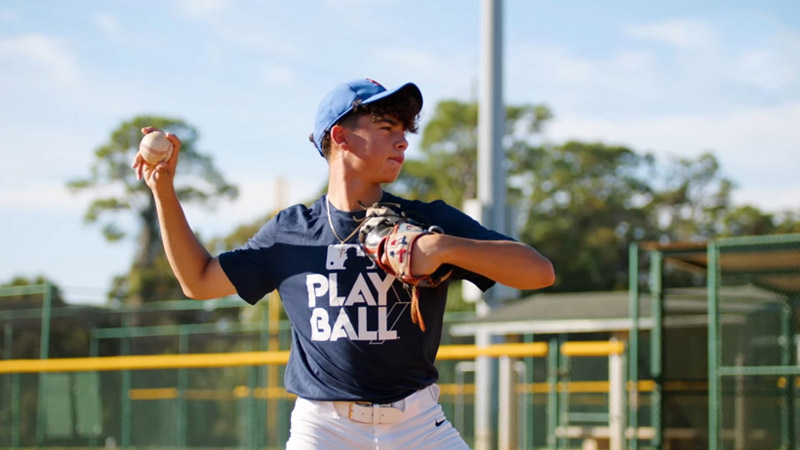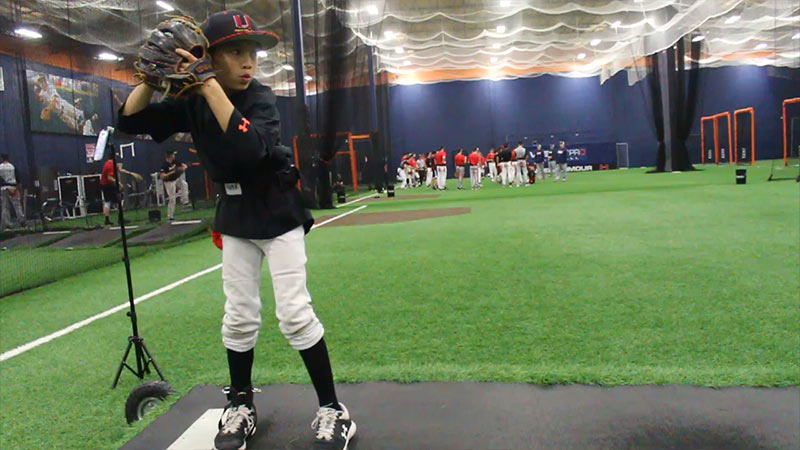As youth baseball enthusiasts and parents, we often find ourselves marveling at the impressive skills of young athletes on the diamond. The question that frequently arises is, “How fast do 12-year-olds pitch?”
Understanding the average pitching speeds for these aspiring athletes is not just a matter of curiosity but plays a crucial role in their development and safety.
In this blog post, we delve into the fascinating world of youth baseball, shedding light on the factors that influence the pitching speed of 12-year-old players.
We explore the physical and technical aspects, training, and coaching strategies that help these young pitchers reach their potential.
So, whether you’re a young pitcher looking to improve or a parent seeking insights into your child’s baseball journey, join us as we uncover the secrets behind the velocity of 12-year-old pitchers.
How Fast Do 12-Year-Olds Pitch?
The pitching speed of a 12-year-old baseball player can vary widely depending on factors such as their physical development, experience, and training.
On average, a 12-year-old pitching speed might throw a fastball in the range of 45 to 60 miles per hour (72 to 97 kilometers per hour).
However, it’s important to remember that this is a general estimate, and there is a lot of variability. Some 12-year-olds may throw slower, while others may throw faster.
Pitching speed can also be influenced by factors like proper coaching, mechanics, strength and conditioning, and genetics. As young pitchers continue to develop and gain experience, their pitching speed may increase over time.
It’s important for young pitchers to focus on proper mechanics and not just try to throw as hard as possible, as this can help prevent injuries and contribute to their long-term development as baseball players.
Working with coaches and getting the right guidance is essential for young athletes.
Average Pitch Speed by Age
Average pitch speeds can vary by age, but it’s important to remember that there is a wide range of abilities and development within each age group.
Here are some approximate average pitch speeds for various age groups in baseball:
- 9-10 years old: Around 40-50 mph (64-80 km/h)
- 11-12 years old: Around 45-60 mph (72-97 km/h)
- 13-14 years old: Around 55-70 mph (88-113 km/h)
- 15-16 years old: Around 65-80 mph (104-129 km/h)
- 17-18 years old: Around 75-90 mph (120-145 km/h)
Again, these are general estimates, and there is a lot of variation among young pitchers.
Some individuals may throw faster or slower than the averages for their age group, depending on factors such as physical development, training, and coaching.
Proper mechanics, strength, and conditioning play a significant role in improving pitch speed, and many young pitchers continue to develop and increase their velocity as they gain experience and grow.
Coaches and parents should prioritize safety and proper pitching mechanics for young players to help prevent injuries and foster long-term development.
The Basics of Youth Baseball Pitching

Youth baseball pitching is a critical aspect of the game, and it’s important to teach young players the fundamentals while prioritizing safety and proper development.
Here are some basic principles and tips for youth baseball pitching:
Proper Mechanics
Emphasize the importance of good pitching mechanics from the start. Teach young pitchers the basic components of a sound delivery, including leg lift, balance, stride, arm action, and follow-through.
Start with the “windmill” drill, which helps young pitchers understand the full arm motion in a controlled manner.
Gripping the Baseball
Teach players how to grip the baseball correctly, with the thumb and index finger on the seams for better control and spin.
For young pitchers, it’s common to start with a basic four-seam fastball grip.
Stance and Balance
Ensure a balanced and athletic stance on the mound. The feet should be shoulder-width apart, and the weight evenly distributed.
Teach young pitchers to maintain balance throughout their delivery.
Pitch Selection
Focus on one or two primary pitches, such as a fastball and changeup. It’s essential for young pitchers to master the basics before introducing more advanced pitches like curveballs or sliders.
Warm-Up
Prioritize a thorough warm-up routine that includes stretching, light throwing, and gradually increasing the throwing intensity. This helps prevent injury.
Pitch Count and Rest
Adhere to pitch count and rest guidelines to protect young arms. Various organizations have established pitch count limits based on age and the number of days of rest required between pitching appearances.
Communication
Encourage open communication with the pitcher. Ask how they feel during the game, and make sure they understand the importance of being honest about any discomfort or fatigue.
Encourage Fun
Keep practices and games enjoyable for young pitchers. Stress the importance of having fun and not putting too much pressure on themselves.
Long-Term Development
Remember that youth baseball is about development. Avoid overworking young pitchers with excessive innings or pitches. Rest and recovery are crucial for long-term health.
Seek Professional Guidance
Consider enrolling young pitchers in pitching clinics or working with experienced pitching coaches who can provide guidance on mechanics and proper development.
Safety
Emphasize safety, including the use of appropriate protective gear, such as helmets for pitchers and safety screens for practice sessions.
Sportsmanship
Teach young pitchers about good sportsmanship and respect for teammates, opponents, coaches, and umpires.
It’s important to create a positive and supportive environment for young pitchers, where they can learn, improve, and enjoy the game. Youth baseball should be a valuable learning experience that sets the foundation for their future development as baseball players.
Factors Influencing Pitching Speed

Pitching speed in baseball is influenced by various factors, and it’s important for pitchers to understand and work on these aspects to improve their velocity. Here are some key factors that can influence pitching speed:
Mechanics
Proper pitching mechanics are essential for maximizing speed and accuracy.
Efficient mechanics involve the entire body, from the legs and hips to the torso and arms. Poor mechanics can lead to reduced speed and increase the risk of injury.
Strength and Conditioning
Developing the strength and power of the legs, core, and upper body is crucial for generating pitching speed. Resistance training, plyometrics, and exercises targeting these muscle groups can help increase velocity.
Flexibility and Mobility
A good range of motion and flexibility in the shoulder and hip joints are important for generating optimal arm speed and mechanics. Regular stretching and mobility exercises can enhance pitching performance.
Pitching Arm Health
Maintaining the health of the pitching arm is essential. This includes proper warm-up and cool-down routines, as well as taking adequate rest between pitching appearances to prevent overuse injuries.
Grip and Release
The way a pitcher grips and releases the baseball can affect the movement and speed of the pitch. Experimenting with different grips and release points can help optimize speed and control.
Mental Toughness
Confidence and mental focus can play a significant role in pitching speed. A composed and confident pitcher is more likely to generate power effectively.
Pitching Experience
As pitchers gain experience and refine their skills, they often see improvements in their speed. Learning from each outing and continuously working on mechanics and strategies can lead to increased velocity.
Body Type and Genetics
Some individuals may have genetic predispositions that affect their physical attributes, including muscle composition, limb length, and body type, which can influence pitching speed to a degree.
Coaching and Feedback
Working with experienced coaches who can provide guidance, analyze mechanics, and offer feedback is invaluable for enhancing pitching speed.
Technology and Analysis
Modern technology, such as video analysis and radar guns, can help pitchers and coaches track and improve pitching speed and mechanics.
Nutrition and Hydration
Proper nutrition and hydration are essential for overall performance and recovery. Ensuring the body has the necessary energy and nutrients can help pitchers perform at their best.
Rest and Recovery
Adequate rest and recovery are critical to prevent overuse injuries and maintain peak performance. Rest days and proper sleep are important components of a training regimen.
Interval Training
Incorporating interval training and sprint workouts into a training routine can help build explosive power, which can translate into increased pitching speed.
It’s important for pitchers, especially young ones, to work on these factors gradually and seek guidance from experienced coaches to ensure that they develop good habits and avoid overuse injuries.
Incremental improvements in all these areas can contribute to increased pitching speed over time.
Measuring Pitching Speed

Measuring pitching speed is a crucial aspect of baseball and can provide valuable feedback for pitchers to track their progress and make necessary adjustments. There are several methods commonly used to measure pitching speed:
Radar Guns
Radar guns are the most common and accurate tools for measuring pitching speed.
These devices use Doppler radar technology to track the speed of the baseball as it travels from the pitcher’s hand to the catcher or a designated target.
Radar guns are often used in professional, college, high school, and even youth baseball games and practices. They provide real-time velocity readings, typically in miles per hour (MPH) or kilometers per hour (KPH).
Pitch Tracking Systems
Some advanced pitch tracking systems use cameras and software to track the trajectory and speed of the pitched baseball. These systems can provide not only velocity but also detailed information on the movement and spin of the pitch.
Pitch tracking systems, like those used in Major League Baseball, are also used in some college and high school programs to analyze pitching performance.
Mobile Apps and Smart Devices
Several mobile apps and smart devices are available that claim to measure pitching speed using the camera on a smartphone or a sensor attached to the baseball.
While these tools may provide a general idea of speed, they are often less accurate than radar guns and pitch-tracking systems.
Mobile apps and smart devices can be useful for casual training and practice but may not be suitable for official measurements.
Scout Observations
In some cases, scouts and experienced coaches may estimate a pitcher’s speed based on their visual observations.
While this method is less precise than radar guns or tracking systems, experienced scouts can make reasonably accurate estimates.
When measuring pitching speed, it’s essential to consider the following:
Consistency
Multiple measurements should be taken to ensure accuracy and consistency. Pitchers may have variations in their speed from pitch to pitch.
Location
Radar guns and tracking systems should be set up in a location that provides an accurate reading, such as behind the catcher or in the stands. The distance between the measurement device and the pitcher can affect the accuracy of the reading.
Environmental Factors
Weather conditions, air density, and other environmental factors can impact pitch speed, so it’s essential to take these into account when interpreting measurements.
Youth Players
When working with young pitchers, it’s important to use age-appropriate measurement tools and consider the safety and development of the players.
Measuring pitching speed is a valuable tool for player development, scouting, and improving overall performance.
Whether you’re a coach, player, or scout, understanding the methods and considerations for accurate measurement is essential.
FAQs
How fast do Little League pitchers throw?
Little league pitchers typically throw pitches ranging from 45 to 65 miles per hour, with 12-year-olds falling within this range.
How fast should a 12-year-old pitch?
A 12-year-old pitcher should aim to throw consistently around 50-60 miles per hour. However, individual development varies, so focusing on good mechanics and control is essential.
What is the fastest Little League pitch speed?
The fastest Little League pitch speed ever recorded is around 80 miles per hour, but it’s exceptional. Most little league pitchers do not reach these speeds.
How fast does a 12-year-old pitch?
A 12-year-old pitcher can typically throw pitches ranging from 45 to 65 miles per hour, but the exact speed varies based on their development, experience, and training.
How fast should 12-year-old pitch?
A 12-year-old pitcher should aim to throw between 50-60 miles per hour, but it’s crucial to prioritize proper mechanics and control over raw speed at this age for long-term development and safety.
Wrapping Up
In the journey of youth baseball, understanding how fast 12-year-olds pitch is essential not only for gauging progress but also for safeguarding their well-being.
We’ve explored the multifaceted factors influencing pitching speed, from proper mechanics to strength and conditioning, all the way to nurturing a love for the game.
As young athletes continue to hone their skills and grow physically, they have the potential to increase their pitching speed significantly.
Coaches, parents, and players should collaborate to create a supportive environment that prioritizes safety, development, and enjoyment of the game.
With the right guidance and a holistic approach to their growth, 12-year-old pitchers can unlock their potential and take their skills to the next level.
The future of youth baseball is in their hands, and we’re here to support them on this exciting journey.







